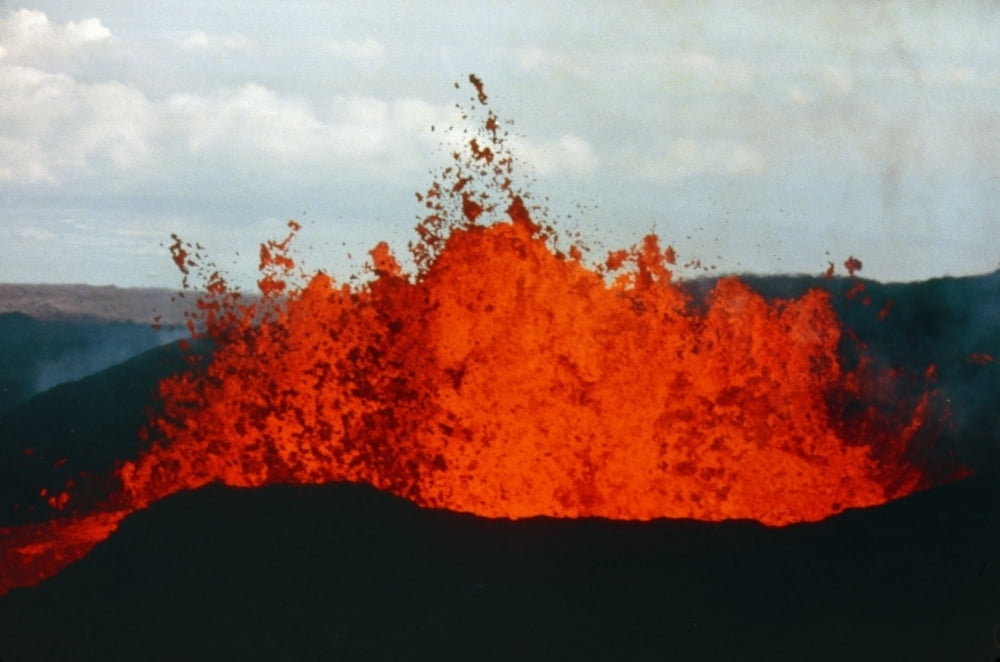

If you imagine lava forcing its way to the surface through rock fissures, that’s basically what a rift zone is. The eruption began in the summit, and then it moved on to one of what we call the “rift zones”-the Northeast Rift Zone. There’s not much on Mauna Loa, especially near the summit. Nobody lives there nobody lives near there. At the summit of Mauna Loa, there’s a big caldera-and that comes from the word cauldron, so if you imagine a big, round container where active lava has erupted, that’s what we’ve got. You can imagine how much scientific instrumentation has improved in the 38 years since Mauna Loa was last actively erupting.

Geological Survey who monitor these volcanoes, because we have so much better technology to capture this information as it comes in. This eruption is really amazing for volcanologists around the world, and particularly those with the U.S. It’s erupted more than 30 times since just the 1840s. Phoenix: Mauna Loa has a really long and storied eruptive history, and it’s been at this game for a million years, give or take. Nyce: Talk to me a little bit about this eruption and what you’re watching as a volcanologist. From its base on the seafloor to its summit-which is almost 14,000 feet above sea level-it is taller than Mount Everest. It is more than 70 miles long and more than 60 miles across. You might think it was just a very large hill.Īnd when I say very large, I mean if you’re there, you can’t even fit the entire volcano in a standard camera lens. So essentially, we’re seeing a very gentle slope. It gets its name from how it looks-like a warrior’s shield laid on its side.

But Mauna Loa is an entirely different type of volcano from those. We usually think of the conical, pointy inverted V as a volcano. Jess Phoenix: Mauna Loa is the kind of volcano that defies the visual stereotypes that we all carry in our heads. Our conversation has been edited and condensed for clarity.Ĭaroline Mimbs Nyce: For someone who’s never been there or isn’t familiar with Mauna Loa, could you explain a little about what it looks like and why it’s special? We discussed the significance of the eruption-and what to expect in the days to come. I talked with Jess Phoenix, a volcanologist with a personal connection to Mauna Loa: It was the first volcano she ever worked on as a volunteer researcher (“basically like an unpaid intern”) at the beginning of her career. Authorities say the eruption does not threaten any local communities no evacuation orders have been issued.įor scientists, it’s an exciting development. Hawaii’s Mauna Loa, a giant mound of a volcano that looks so much like Mars that researchers actually hold Mars simulations there, has stirred. Helens is an example of a composite cone volcano.The world’s largest volcano is erupting for the first time since 1984. The result is a cone that has a gentler slope than a cinder cone but is steeper than a shield volcano. Alternating eruptions of volcanic ash and lava cause layers to form. They form when different types of eruptions deposit different materials around the sides of a volcano. Composite cone volcanoes are also called stratovolcanoes. Hawaii’s Mauna Loa is a famous example of a shield cone volcano.Ī third type of volcanic cone is a composite cone. The lava spreads in a thin layer before cooling. The lava that erupts from these volcanoes is a thin liquid that slowly emerges from the center of the volcano as well as from cracks in its sides. In contrast, shield volcanoes are characterized by a large, broad cone with sides sloping gently away from the center. Vesuvius is a famous cinder cone volcano.

As a result, cinder cone volcanoes tend to be smaller than other types of volcanoes. This type of eruption contains little lava, as the magma hardens and breaks into pieces during the explosion. Cinder cones form from ash and magma cinders-partly-burned, solid pieces of magma, that fall to the ground following a volcanic eruption. The steepest cones form around cinder cone volcanos. Volcanic cones can be steep or gently sloping depending on the type of eruption that forms them. A volcanic cone is a hill-shaped landform that forms around a volcano.


 0 kommentar(er)
0 kommentar(er)
